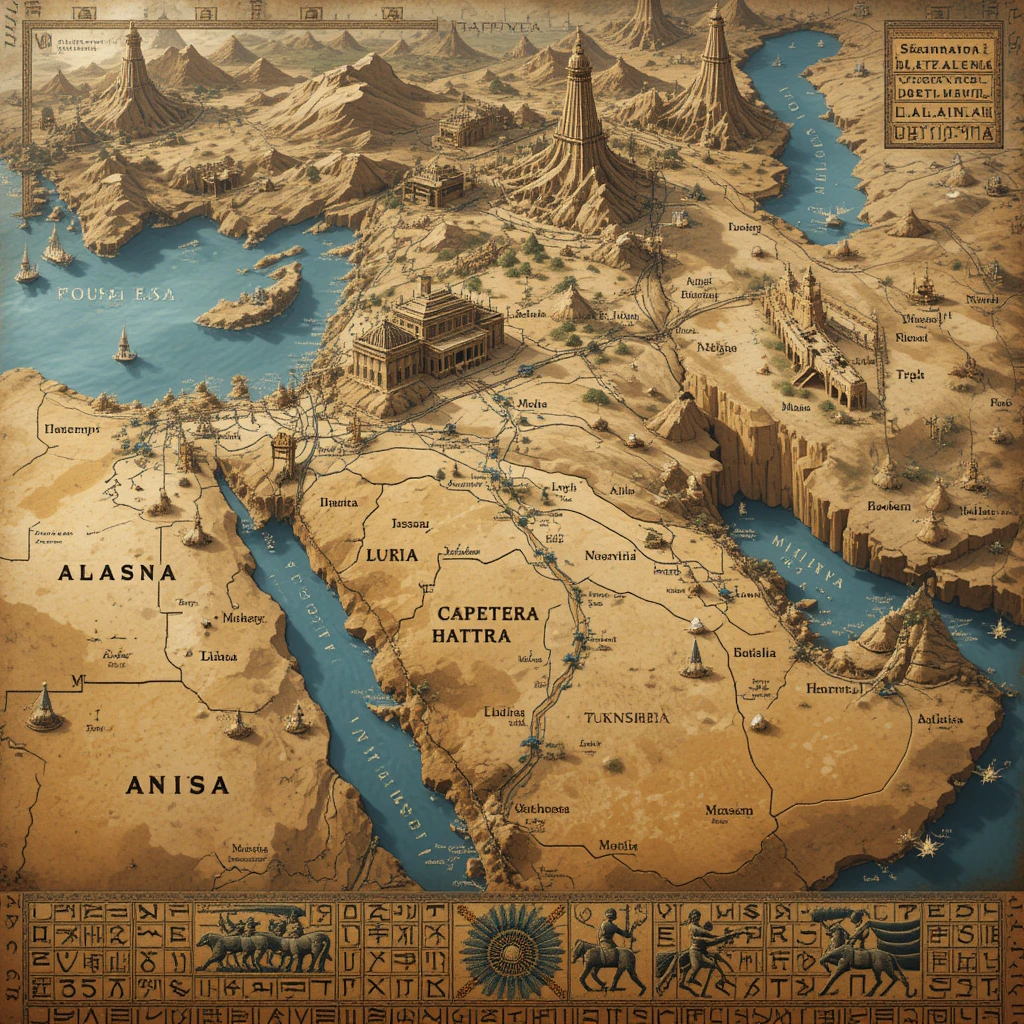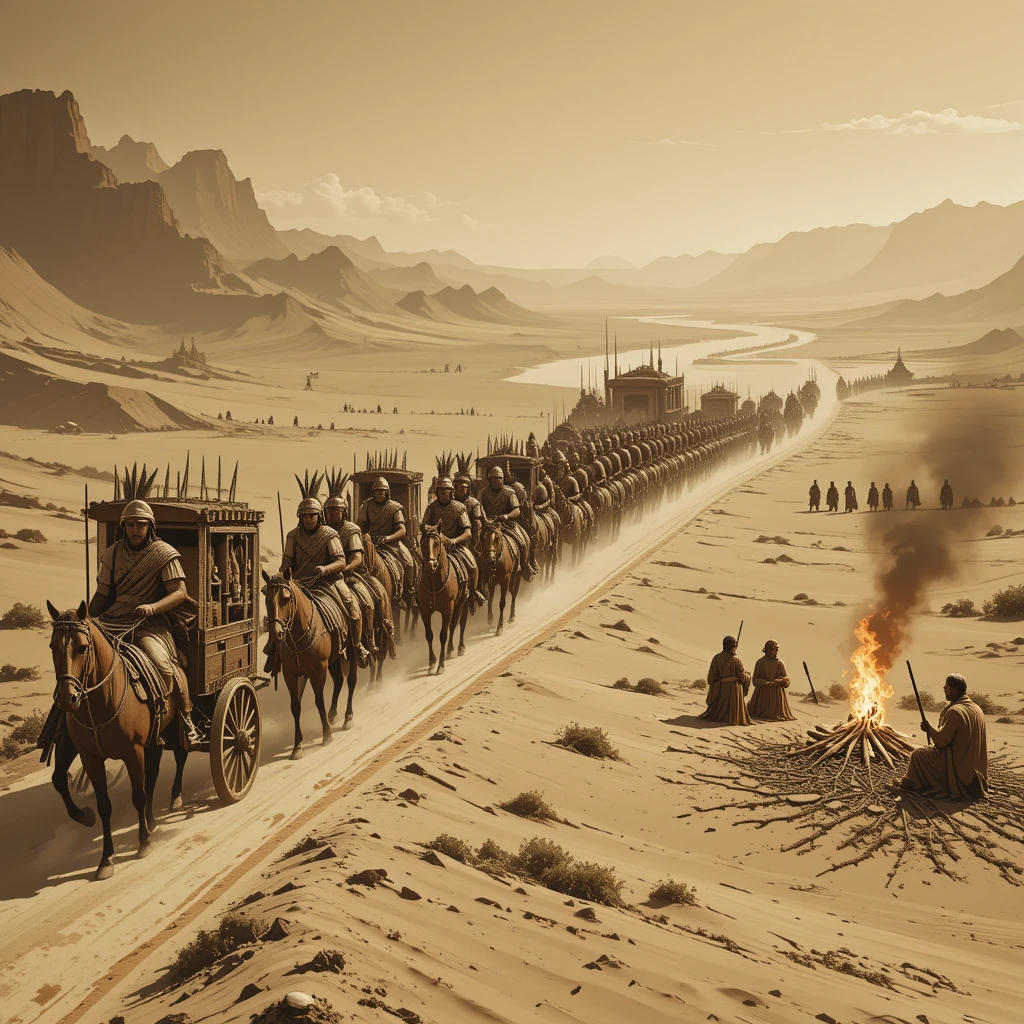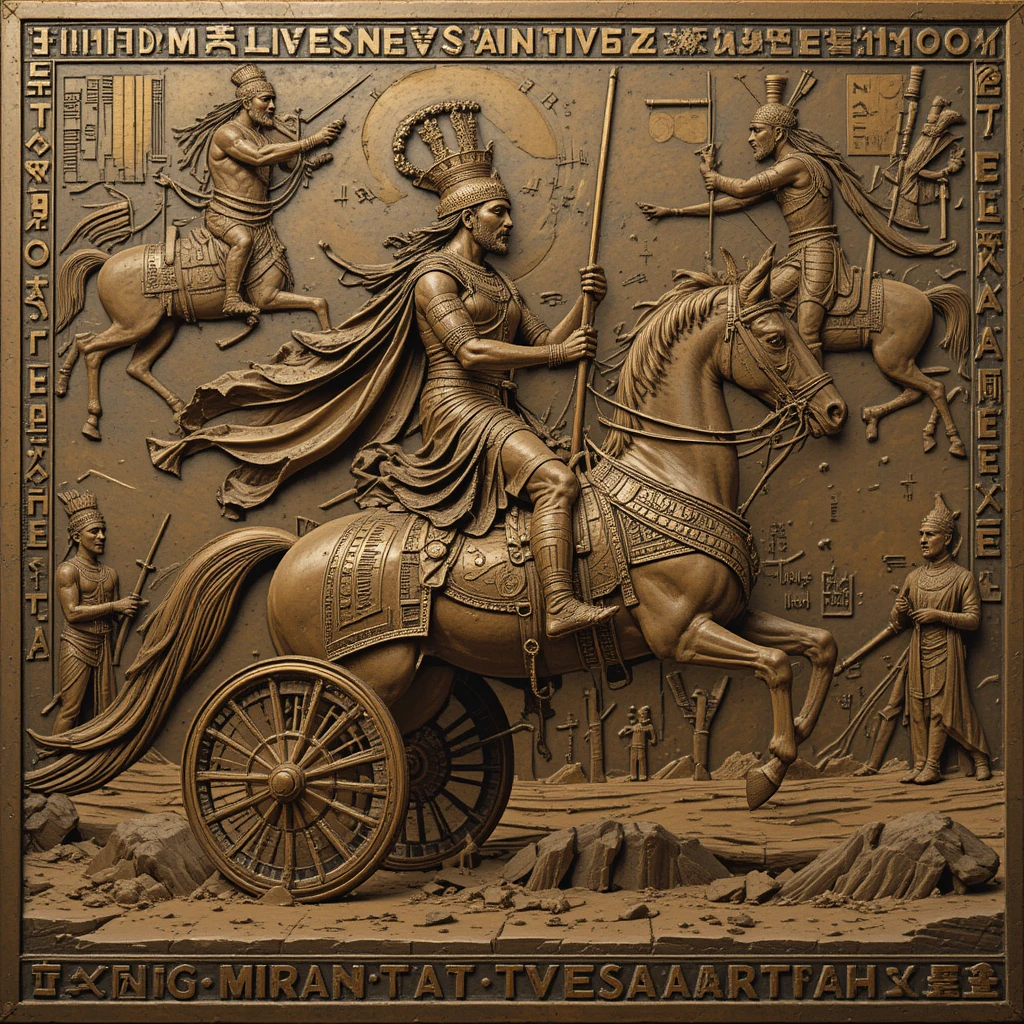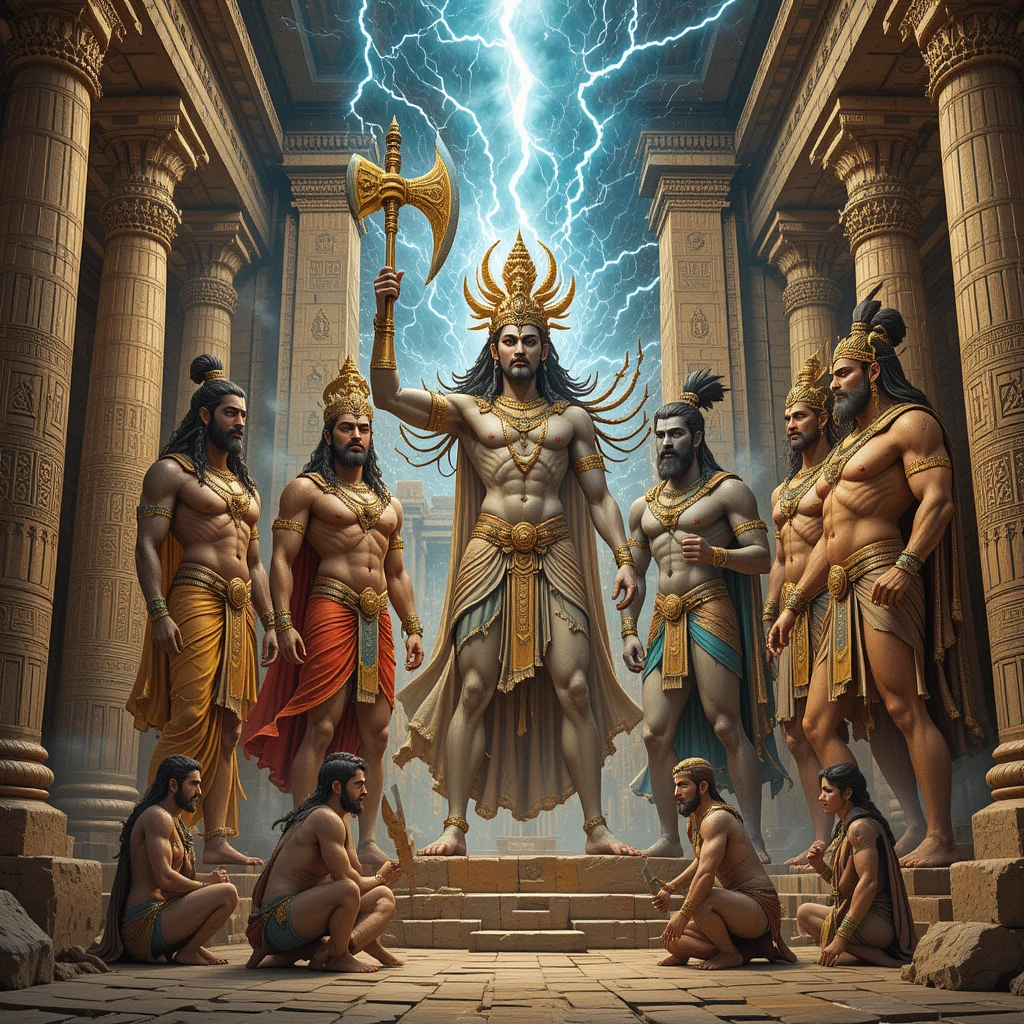Introduction: Unveiling Ancient Connections Across Civilizations
The Hittite Kingdom, spanning from approximately 1650 to 1180 BCE in the heart of Anatolia (present-day Turkey), and the Mitanni Empire, which emerged around 1550 BCE and persisted until about 1260 BCE in northern Mesopotamia and Syria, represent two of the most enigmatic and influential civilizations of the Late Bronze Age Near East. These empires, often eclipsed in popular historical narratives by contemporaries like Egypt and Assyria, were pivotal players in the ancient world’s geopolitical landscape, engaging in intricate wars, diplomatic alliances, and cultural exchanges that profoundly shaped regional dynamics. Trevor Bryce’s authoritative work, The Kingdom of the Hittites (2005, second edition), meticulously reconstructs the Hittite political and military history using cuneiform tablets unearthed from the royal archives at Hattusa, the Hittite capital. Similarly, Hourly History’s Mitanni Empire: A History from Beginning to End (2022) provides a succinct yet illuminating overview of the Mitanni’s ascent as a chariot-driven superpower, highlighting their Hurrian foundations enriched by an Indo-Aryan elite overlay.

Table of Contents
This article revisits and expands upon the fascinating parallels between these empires and the Vedic parampara—the ancient Indo-Aryan tradition encapsulating religious rituals, cosmological beliefs, social hierarchies, and knowledge transmission as enshrined in the Rigveda (circa 1500–1200 BCE). Vedic parampara, frequently rendered as “lineage” or “tradition,” embodies a comprehensive worldview wherein divine order (ṛta), sacrificial rituals (yajna), and societal equilibrium are inextricably linked. While the Hittites exemplify an early Indo-European Anatolian branch with distinct linguistic roots, the Mitanni’s ruling elite exhibits remarkably direct affinities with Vedic Indo-Aryan elements, indicative of shared migratory origins from the Eurasian steppes or Central Asia. These connections defy notions of Vedic culture’s isolation, proposing instead a wider Indo-European diaspora where concepts, deities, and customs traversed vast distances.
A logical examination reveals that these parallels are not coincidental but rooted in Proto-Indo-European (PIE) heritage. The Mitanni, in particular, emerge as a “western outpost” of Indo-Aryan culture, with their elite lexicon and pantheon predating or aligning with Rigvedic evolutions. Bryce’s volume emphasizes the Hittites’ syncretic religion, incorporating Hurrian (Mitanni) influences, while Hourly History underscores the Mitanni’s Indo-Aryan superstrate as fundamental to their military dominance. This rewrite integrates fresh insights from Bryce’s detailed rituals and Hourly History’s focus on Indo-Aryan elements, while delving deeper into linguistic ties, mythological overlaps, the landmark Suppiluliuma-Shattiwaza treaty, ritual practices encompassing cow sacrifices and meat consumption, and societal structures. Through scholarly evidence and logical deduction, we explore how these empires shed light on the Vedic parampara’s origins, potentially revolutionizing our comprehension of ancient migrations.
The Hittite Empire, at its apex under monarchs like Suppiluliuma I (r. 1344–1322 BCE), commanded extensive territories from the Aegean to the Euphrates, conducting advanced diplomacy evidenced by over 30,000 clay tablets from Hattusa. Bryce chronicles their progression from Old Kingdom city-states to a New Kingdom hegemon, noting their pioneering use of iron weaponry and chariot tactics—innovations that resonate with Vedic warfare depictions in the Rigveda. In contrast, the Mitanni arose from Hurrian tribes consolidated under an Indo-Aryan aristocracy, as outlined in Hourly History, dominating the “Great Powers Club” alongside Egypt, Babylon, and Hatti until Hittite and Assyrian aggressions reduced them to vassal status. Their capital, Washukanni (possibly signifying “good waters” in Indo-Aryan), remains unexcavated, but artifacts such as cylinder seals and horse-training manuals unveil a culture fusing Hurrian and Indo-Aryan traits.

The interactions between these empires—characterized by rivalry and collaboration—fostered cultural diffusion. The Hittites overran Mitanni territories circa 1340 BCE, assimilating Hurrian deities and rituals, thereby indirectly infusing Vedic-like motifs into their pantheon. Logically, if Indo-Aryan migrants reached Syria by 1700 BCE, as attested by Mitanni nomenclature and terminology, this precedes the Rigveda’s composition, implying Mitanni conserved an archaic Vedic form detached from Indian trajectories. This contests the Aryan Invasion Theory’s linear paradigm, advocating for multi-directional dispersals.
In the ensuing sections, we dissect these parallels, incorporating updated perspectives from Bryce’s comprehensive rituals and Hourly History’s Indo-Aryan emphasis, while addressing sacrifices, meat consumption, and priestly distributions—core to Vedic yajna but frequently underexplored in Near Eastern contexts.
Linguistic Connections: Echoes of Proto-Indo-European in Ancient Texts
Language forms the foundation of cultural identity, and the linguistic affinities between Hittite, Mitanni, and Vedic Sanskrit offer compelling evidence of common origins. Both Hittite and Vedic are part of the Indo-European family, yet Hittite, as the earliest attested IE language, constitutes the Anatolian branch, diverging from PIE around 4000 BCE. Bryce’s The Kingdom of the Hittites illuminates Hittite’s development, highlighting its cuneiform adaptation from Akkadian and retention of archaisms like the laryngeal h sound, lost in other IE branches but reflected in Vedic phonetics. Cognates are abundant: Hittite watar (“water”) parallels Vedic udán, and ekut (“drink”) resembles piba in Rigvedic hymns. Religious terms, such as oaths invoking “truth,” mirror Vedic satya, underscoring cosmic integrity.
The Mitanni scenario is more direct, as Hourly History stresses their Hurrian language augmented by an Indo-Aryan superstrate—a stratum of elite vocabulary from a dominant class. This encompasses numerals like aika (Vedic eka, “one”), panza (pañca, “five”), and horse-related terms such as asva (“horse,” Vedic aśva) and vartana (“turn,” akin to chariot maneuvers in Rigveda 1.162). Royal names—Tushratta (Vedic Tvesaratha, “whose chariot flashes”) and Artatama (Rtadhama, “abode of truth”)—are compound words directly from Vedic Sanskrit, as documented in the Amarna Letters and Kikkuli’s text. Scholars like Michael Witzel posit this superstrate as pre-Rigvedic Indo-Aryan, devoid of Iranian traits like h for s (e.g., aika vs. Iranian aiva), logically positioning Mitanni as an early Indo-Aryan offshoot migrating circa 1700 BCE.

Expanding this, the term marya (Mitanni mariyannu, “young warrior”) directly corresponds to Rigvedic marya (Rigveda 1.86.3), denoting chariot-driving heroes, highlighting a shared warrior ethos. Bryce notes Hittite adoption of Hurrian terms following Mitanni conquest, indirectly incorporating Indo-Aryan elements in military lexicon. Logically, these linguistic bonds suggest cultural transmission: if Mitanni elites spoke an Indo-Aryan dialect, their rituals and social norms likely echoed Vedic parampara, perpetuated through oral lineages akin to guru-shishya traditions. Critics, such as Annelies Kammenhuber, propose Indo-Iranian roots, but specifics like Vedic god names favor Indo-Aryan affiliation.
Hourly History further details how this superstrate facilitated Mitanni’s chariot innovation, paralleling Rigvedic exaltation of horses (Rigveda 1.163), where aśva symbolizes power and divinity. In depth, the Kikkuli text’s nine-turn racetrack (navavartana) echoes Vedic ritual circuits, suggesting shared symbolic numerology. Thus, linguistics not only bridges these empires but unveils the expansive scope of Vedic parampara.
Religious and Mythological Overlaps: Shared Deities, Cosmic Order, and the Historic Treaty
The polytheistic framework of Vedic parampara, with deities personifying natural forces and ethical order, finds profound echoes in Hittite and Mitanni religions. Hourly History spotlights Mitanni’s evocation of Vedic gods—Mitra (friendship), Varuna (order), Indra (storm warrior), and Nasatyas (twin healers)—in treaties, identical to Rigvedic figures (Rigveda 10.125). These are not mere generic IE entities but distinctly Vedic, as the Mitra-Varuna duo upholds ṛta, paralleling Mitanni oath-keeping.
Bryce delineates Hittite mythology’s PIE foundations, with Tarhunt vanquishing the serpent Illuyanka—a motif mirroring Indra’s Vritra-slaying (Rigveda 1.32), emblematic of order triumphing over chaos. The “thousand gods” pantheon, encompassing sun goddess Arinna (Vedic Surya/Ushas), reflects Vedic multiplicity. Following Mitanni integration, Hittites embraced Hurrian Teshub (Tarhunt), merging with Vedic-like storm themes.

A pivotal convergence is the Suppiluliuma-Shattiwaza treaty (c. 1380 BCE), elaborated in Bryce and Hourly History. This inaugural written pact between the empires, inscribed on Hattusa cuneiform tablets (KBo 1 1 and parallels), formalizes Shattiwaza’s vassalage after Hittite support against usurpers. The inscription invokes “Mitra, Varuna, Indra, and Nasatyas” as witnesses, with penalties for violation—terms aligning with Rigvedic invocations (Rigveda 7.64). A partial translation: “The gods… Mitra, Varuna, Indra, the Nasatyas… shall stand as witnesses to this treaty… If Shattiwaza does not observe these words… may these gods destroy him.” This echoes Vedic sandhi pacts sealed by divine oaths.
Logically, such overlaps denote shared PIE mythology, with Mitanni serving as a Vedic “time capsule.”
Ritual Practices: Sacrifices, Meat Consumption, and Priestly Distributions
Vedic yajna entails animal offerings, meat sharing, and dakṣiṇā to purohits, ensuring cosmic harmony. Hittite and Mitanni rituals exhibit comparable features, expanded here with book insights.
Bryce’s book details Hittite animal sacrifices as integral to festivals and oracles, involving cows, sheep, and goats sacrificed via throat-slitting or immolation. Meat was placed on divine tables, then distributed: priests (šankunni) received prime cuts, while participants shared the rest in communal feasts, akin to Vedic post-yajna meals (Rigveda 10.91). Cow sacrifices featured in fertility rites, with blood libations and raw/cooked portions, resembling Vedic gomedha or paśu-bandha. Texts forbid eating certain meats in rituals, stressing purity like Vedic mandates. Priests’ shares reinforced social hierarchy, similar to dakṣiṇā.
For Mitanni, Hourly History infers sacrifices from Indo-Aryan influences, with horse rituals paralleling ashvamedha. Archaeological finds, like ritual bowls and seals, imply cattle offerings to Indra, with meat consumed communally. Vedic texts permit meat in rituals (Rigveda 10.86), and Mitanni’s warrior society likely included such, allocated to priest-like figures, though direct evidence is limited. Both empires’ pit rituals for ancestors parallel Vedic pitṛ-yajna.

Logically, these practices derive from PIE sacrificial norms, evolving into Vedic formality.
Societal Structures: Warriors, Kingship, and Parampara Transmission
Mitanni’s marya elite parallels Vedic kshatriyas, as per Hourly History, emphasizing chariot warfare. Bryce highlights Hittite king-priest roles, akin to Vedic raja-rishi. Scribal schools preserved knowledge, mirroring Vedic oral parampara.
Historical Context and Logical Analysis
The empires’ rivalry peaked in Hittite supremacy, with cultural assimilation. Mitanni’s Indo-Aryan elite likely migrated pre-1500 BCE, paralleling Vedic India’s formation. This endorses multi-branch dispersal, with Vedic parampara as a collective legacy.
In conclusion, these parallels affirm Vedic culture’s wider context, prompting a reassessment of ancient histories.
Sources, References, and Evidence
The following is a curated list of sources referenced in this article, drawn from web searches and scholarly materials. They include books, articles, encyclopedia entries, and academic discussions. Citations are numbered as per inline references for easy cross-referencing.
- Indo-Aryan superstrate in Mitanni
- Arya-Akasha: “HERE BE INDO-ARYANS?” On the Vedic Gods of the Mitanni –
- New Indology: Were the Mitanni Aryans really Indo-Aryans?
- Reddit r/IndoEuropean: Evidence of Vedic/Indic roots of the Mitanni Kingdom of West Asia – https://www.reddit.com/r/IndoEuropean/comments/132snot/evidence_of_vedicindic_roots_of_the_mitanni/
- ResearchGate: (PDF) About the Mitanni-Aryan gods – https://www.researchgate.net/publication/297938476_About_the_Mitanni-Aryan_gods
- JSTOR: The ‘Aryan’ Gods of the Mitanni Treaties – https://www.jstor.org/stable/595878
- Lumen Learning: The Indo-Aryan Migration and the Vedic Period – https://courses.lumenlearning.com/suny-hccc-worldcivilization/chapter/the-indo-aryan-migration-and-the-vedic-period/
- Brill: Chapter 13 Indo-Aryans in the Ancient Near East – https://brill.com/display/book/9789004548633/BP000013.xml?language=en
- Reddit r/IndoEuropean: Steppe Hypothesis Explanation for Mitanni Indo-Aryan loanwords? – https://www.reddit.com/r/IndoEuropean/comments/17khp2t/steppe_hypothesis_explanation_for_mitanni/
- World History Encyclopedia: Mitanni – https://www.worldhistory.org/Mitanni/
- Reddit r/IndoEuropean: Great scholarly article about the Aryan gods of Mitanni – https://www.reddit.com/r/IndoEuropean/comments/mcmhvm/great_scholarly_article_about_the_aryan_gods_of/?rdt=50255
- Tied Verbix: Mitanni Aryan language – https://tied.verbix.com/tree/indo/mitanni.html
- Linguistics Stack Exchange: How do we know that Mitanni Indo-Aryan loan words are derived from Proto-Indo-Aryan and not Vedic Sanskrit? – https://linguistics.stackexchange.com/questions/40201/how-do-we-know-that-mitanni-indo-aryan-loan-words-are-derived-from-proto-indo-ar
- Wikipedia: Indo-Aryan peoples – https://en.wikipedia.org/wiki/Indo-Aryan_peoples
- Wikipedia: Indo-Aryan superstrate in Mitanni – https://en.m.wikipedia.org/wiki/Indo-Aryan_superstrate_in_Mitanni
- New Indology: Were the Mitanni Aryans really Indo-Aryans? – http://new-indology.blogspot.com/2017/05/were-mitanni-really-indo-aryans.html?m=1
- Britannica: Mitanni – https://www.britannica.com/place/Mitanni
- New World Encyclopedia: Mitanni – https://www.newworldencyclopedia.org/entry/Mitanni
- Quora: Were Mitanni kings from India? – https://www.quora.com/Were-Mitanni-kings-from-India
- Wikipedia: Animal sacrifice – https://en.wikipedia.org/wiki/Animal_sacrifice
- Bryn Mawr Classical Review: Animal Sacrifice in the Ancient Greek World – https://bmcr.brynmawr.edu/2018/2018.08.07/
- My Jewish Learning: When Eating Meat was a Sacrifice – https://www.myjewishlearning.com/article/when-eating-meat-was-a-sacrifice/
- Cambridge University Press: Animal Sacrifice in Hittite Anatolia – https://www.cambridge.org/core/books/abs/animal-sacrifice-in-the-ancient-greek-world/animal-sacrifice-in-hittite-anatolia/A4A53586754389C88F2226107B6D1D11
- Quora: Who ate all the meat in the Old Testament sacrifices? – https://www.quora.com/Who-ate-all-the-meat-in-the-Old-Testament-sacrifices
- Center for Hellenic Studies: At the Table of the Gods? Divine Appetites and Animal Sacrifice – https://research-bulletin.chs.harvard.edu/2017/09/11/divine-appetites-animal-sacrifice/
- Food and Drink in the Ancient World: Animal Sacrifice – https://foodanddining.omeka.net/exhibits/show/sacrificial-food/animal-sacrifice
- Our Daily Bread Ministries: Picturing Animal Sacrifice – https://ourdailybread.org/article/picturing-animal-sacrifice/
- Reddit r/history: How did ancient cultures generally ‘dispose’ of sacrificed animals? – https://www.reddit.com/r/history/comments/71u06u/how_did_ancient_cultures_generally_dispose_of/
- Quora: Why don’t Hindus eat beef when it is mentioned in their holy books that all types of animal sacrifice were made, including cows? – https://www.quora.com/Why-don-t-Hindus-eat-beef-when-it-is-mentioned-in-their-holy-books-that-all-types-of-animal-sacrifice-were-made-including-cows
- Quora: What did they do with the animals they sacrificed in ancient times, were they eaten? – https://www.quora.com/What-did-they-do-with-the-animals-they-sacrificed-in-ancient-times-were-they-eaten
- History Stack Exchange: What happened to sacrificed animals in ancient Greece? – https://history.stackexchange.com/questions/9508/what-happened-to-sacrificed-animals-in-ancient-greece
- ESDAW: Animal sacrifice – https://www.esdaw.eu/animal-sacrifice.html
- Mi Yodeya: Why were cows so Important and preferred as sacrifice over other animals in Bani Israel? – https://judaism.stackexchange.com/questions/27048/why-were-cows-so-important-and-preferred-as-sacrifice-over-other-animals-in-bani
- GotQuestions.org: Why did God require animal sacrifices in the Old Testament? – https://www.gotquestions.org/animal-sacrifices.html
- Heritage Institute: Suppiluliuma (Hittite) -Shattiwaza (Mitanni) Treaty – http://heritageinstitute.com/zoroastrianism/ranghaya/suppiluliuma_shattiwaza_treaty.htm
- Wikipedia: Shattiwaza – https://en.wikipedia.org/wiki/Shattiwaza
- World History Encyclopedia: The Tablet of the Treaty between Suppiluliuma I and Hukkana – https://www.worldhistory.org/image/9169/the-tablet-of-the-treaty-between-suppiluliuma-i-an/
- Web Archive: SUPPILULIUMA-SHATTIWAZA TREATY – https://web.archive.org/web/20021015190753/http:/www.geocities.com/farfarer2001/hittite_letters/suppiluliuma_shattiwaza_treaty.htm
- Reddit r/IndiaSpeaks: 1380 BCE, 3400 Years Old Inscription of Treaty… – https://www.reddit.com/r/IndiaSpeaks/comments/o7khfr/1380_bce_3400_years_old_inscription_of_treaty/
- British Museum: tablet – https://www.britishmuseum.org/collection/object/W_1913-1011-62
- Oxford Academic: The Supremacy of Hatti: The Reign of Suppiluliuma I – https://academic.oup.com/book/36172/chapter-abstract/314548344?redirectedFrom=fulltext
- Reddit r/IndiaSpeaks: 3300 Years Old Inscription of Treaty… – https://www.reddit.com/r/IndiaSpeaks/comments/11aiu7j/3300_years_old_inscription_of_treaty_between/
- Translation Directory: Indo-Aryan superstrate in Mitanni – https://www.translationdirectory.com/articles/article2490.php
- Wikipedia: Indo-Aryan superstrate in Mitanni – https://en.wikipedia.org/wiki/Indo-Aryan_superstrate_in_Mitanni
- OpenEdition Journals: The Contribution of the Hittite Documentation… – https://journals.openedition.org/syria/5237?lang=en
- Roots Hunt: ROOTSHUNT – https://rootshunt.com/angirasgautam/sumeriancivilizationinfulenceonhinduism/assyria/whowereasurs/tushratta/tushratta.htm
- WebCite: WebCite query result – https://www.webcitation.org/query?url=http://www.geocities.com/farfarer2001/hittite_letters/suppiluliuma_shattiwaza_treaty.htm&=&date=2009-10-25%2B22:04:07
- KU Digital Collections: Treaty of Mattiwaza (Kurtiwaza)… – https://libdigitalcollections.ku.edu.tr/digital/collection/GHC/id/13275/
- Bharat Kalyan: Ancient Indians in Mitanni… – http://bharatkalyan97.blogspot.com/2017/06/ancient-indians-in-mitanni-excerpts.html
- Wikipedia: Indo-Aryan superstrate in Mitanni – https://en.wikipedia.org/wiki/Indo-Aryan_superstrate_in_Mitanni
- Quora: Is Hinduism evolved from Mitanni culture? – https://www.quora.com/Is-Hinduism-evolved-from-Mitanni-culture-Deities-worshipped-by-the-Mitanni-are-almost-similar-to-the-Hindu-gods
- Wikipedia: Historical Vedic religion – https://en.wikipedia.org/wiki/Historical_Vedic_religion
- Wikipedia: Mitanni – https://en.wikipedia.org/wiki/Mitanni
- Reddit r/IndoEuropean: Evidence of Vedic/Indic roots… – https://www.reddit.com/r/IndoEuropean/comments/132snot/evidence_of_vedicindic_roots_of_the_mitanni/
- JSTOR: The ‘Aryan’ Gods of the Mitanni Treaties – https://www.jstor.org/stable/595878
- Wikipedia: Vedic period – https://en.wikipedia.org/wiki/Vedic_period
- History and Faiths: Mitanni and Vedic India – https://historyandfaiths.blogspot.com/2021/02/mitanni-and-vedic-india.html
- Jayasree Saranathan: Vedic Gods in Mitanni? (Part 2) – https://jayasreesaranathan.blogspot.com/2018/01/vedic-gods-in-mitanni-part-2.html
- Arya-Akasha: “HERE BE INDO-ARYANS?”… – https://aryaakasha.com/2019/09/16/here-be-indo-aryans-on-the-vedic-gods-of-the-mitanni/
- Medium: The Vedic origins of Judaism… – https://jasontheargonaut.medium.com/the-vedic-origins-of-judaism-95972b85ef5e
- LSU: Lsu – https://www.ece.lsu.edu/kak/Akhenaten.pdf
- Slife: Vedic Religion – https://slife.org/historical-vedic-religion/
- Jayasree’s Indology blog: Vedic Gods in Mitanni? (Part 2) – https://jayasreesaranathan.wordpress.com/2018/01/06/vedic-gods-in-mitanni-part-2/
- Reddit r/asklinguistics: What’s the relation… – https://www.reddit.com/r/asklinguistics/comments/14o22te/whats_the_relation_of_the_language_spoken_in_the/
- Amazon: The Kingdom of the Hittites – https://www.amazon.com/Kingdom-Hittites-Trevor-Bryce/dp/0199281327
- Academia.edu: (PDF) Bryce The Kingdom Of The Hittites – https://www.academia.edu/5018455/Bryce_The_Kingdom_Of_The_Hittites
- ResearchGate: (PDF) The Kingdom of the Hittites, by Trevor Bryce – https://www.researchgate.net/publication/259707857_The_Kingdom_of_the_Hittites_by_Trevor_Bryce
- Google Books: The Kingdom of the Hittites – https://books.google.com/books/about/The_Kingdom_of_the_Hittites.html?id=Agg5-lpVI2MC
- Academia.edu: (PDF) The Kingdom of the Hittites, by Trevor Bryce – https://www.academia.edu/464255/The_Kingdom_of_the_Hittites_by_Trevor_Bryce
- Oxford University Press: The Kingdom of the Hittites – https://global.oup.com/academic/product/the-kingdom-of-the-hittites-9780199279081
- Wikipedia: Trevor R. Bryce – https://en.wikipedia.org/wiki/Trevor_R._Bryce
- Goodreads: The Kingdom of the Hittites – https://www.goodreads.com/en/book/show/1081088
- Goodreads: The Kingdom of the Hittites – https://www.goodreads.com/book/show/1081088.The_Kingdom_of_the_Hittites
- Goodreads: The Kingdom of the Hittites – https://www.goodreads.com/book/show/1726959
- Wikipedia: Hittites – https://en.wikipedia.org/wiki/Hittites
- National Geographic: The Hittite Empire transformed the world… – https://www.nationalgeographic.com/history/article/hittite-ancient-empire-disappear-mystery
- Reddit r/hinduism: The Hittite link to the Rigveda – https://www.reddit.com/r/hinduism/comments/ys6lpq/the_hittite_link_to_the_rigveda/
- Wikipedia: Hittite mythology and religion – https://en.wikipedia.org/wiki/Hittite_mythology_and_religion
- Britannica: Hittite – https://www.britannica.com/topic/Hittite
- Study.com: Hittite History, Culture & Accomplishments – https://study.com/academy/lesson/hittite-culture-language-clothing.html
- Hinduwebsite: Historical Relationship Between Sanskrit and Hittite – https://www.hinduwebsite.com/general/hittite.asp
- Lumen Learning: The Hittites – https://courses.lumenlearning.com/atd-herkimer-westerncivilization/chapter/the-hittites/
- World History Encyclopedia: The Hittites – https://www.worldhistory.org/hittite/
- Short History: The Vedic period of Indian history – https://www.shorthistory.org/ancient-civilizations/ancient-india/the-vedic-period-of-indian-history/
- Khan Academy: The Hittites – https://www.khanacademy.org/humanities/world-history/world-history-beginnings/ancient-egypt-hittites/a/the-hittites
- Wikipedia: Historical Vedic religion – https://en.wikipedia.org/wiki/Historical_Vedic_religion
- Tamil and Vedas: Hittite Mystery! Were they Hindus? – https://tamilandvedas.com/2015/06/10/hittite-mystery-were-they-hindus/
- The Archaeologist: Who were the Hittites? – https://www.thearchaeologist.org/blog/who-were-the-hittites-the-history-of-the-hittite-empire-explained-in-10-minutes
- TimeMaps: The Hittites – https://timemaps.com/civilizations/the-hittites/
- Brewminate: The Hittite Empire, 1680-1180 BCE – https://brewminate.com/the-hittite-empire-1680-1180-bce/
- Study.com: Hittite People, Empire & Civilization – https://study.com/learn/lesson/hittite-people-civilization.html
- Smarthistory: Hittites, an introduction – https://smarthistory.org/hittites-introduction/
- Quora: What is the relationship between Sanskrit and Hittites/Mitanni? – https://www.quora.com/What-is-the-relationship-between-Sanskrit-and-Hittites-Mitanni
- Arya-Akasha: Of Hittites And Hindus… – https://aryaakasha.com/2020/11/22/of-hittites-and-hindus-and-their-respective-differing-receptions-amidst-some/
- Goodreads: Mitanni Empire: A History from Beginning to End – https://www.goodreads.com/book/show/60292865-mitanni-empire
- Amazon: Mitanni Empire: A History from Beginning to End (Audible) – https://www.amazon.com/Mitanni-Empire-History-Beginning-End/dp/B09SJX5CJ3
- Amazon: Mitanni Empire: A History from Beginning to End (Paperback) – https://www.amazon.com/Mitanni-Empire-History-Beginning-Civilizations/dp/B0C4N2BNHW
- Amazon: Mitanni Empire: A History from Beginning to End (Kindle) – https://www.amazon.com/Mitanni-Empire-History-Beginning-Civilizations-ebook/dp/B09RK56P5G
- Amazon: Mitanni Empire: A History from Beginning to End (Paperback) – https://www.amazon.com/Mitanni-Empire-History-Beginning-Civilizations/dp/B09RG24NX7
- eBay: Mitanni Empire by Hourly History – https://www.ebay.co.uk/itm/354564899384
- Amazon.it: Mitanni Empire – https://www.amazon.it/Mitanni-Empire-History-Beginning-End/dp/B0C4N2BNHW
- Goodreads: Mitanni Empire: A History from Beginning to End – https://www.goodreads.com/en/book/show/60292865-mitanni-empire
- Amazon.in: Mitanni Empire – https://www.amazon.in/Mitanni-Empire-History-Beginning-End/dp/B09RG24NX7
- Amazon.es: Mitanni Empire – https://www.amazon.com/-/es/Hourly-History/dp/B0C4N2BNHW


